![]()
![]()
![]()
Use LEFT and RIGHT arrow keys to navigate between flashcards;
Use UP and DOWN arrow keys to flip the card;
H to show hint;
A reads text to speech;
161 Cards in this Set
- Front
- Back
|
learning |
A process that produces a relatively enduring change in behavior or knowledge as a result of past experience (p. 184)
|
|
|
conditioning
|
The process of learning associations between environmental events and behavioral responses (p. 185)
|
|
|
classical conditioning
|
The basic process that involves repeatedly pairing a neutral stimulus with a response-producing stimulus until the neutral stimulus elicits the same response (p. 186).
|
|
|
unconditioned response (UCR)
|
The unlearned, reflexive response that is elicited by an unconditioned stimulus (p. 186).
|
|
|
unconditioned stimulus (UCS)
|
The natural stimulus that reflexively elicits a response without the need for prior learning (p. 186).
|
|
|
conditioned response (CR)
|
The learned, reflexive response to a conditioned stimulus (p. 187).
|
|
|
conditioned stimulus (CS)
|
A formerly neutral stimulus that acquires the capacity to elicit a reflexive response (p. 187).
|
|
|
higher order conditioning
|
A procedure in which a conditioned stimulus from one learning trial functions as the unconditioned stimulus in a new conditioning trial; the second conditioned stimulus comes to elicit the conditioned response, even though it has never been directly paired with the unconditioned stimulus (p. 188).
|
|
|
stimulus discrimination
|
The occurrence of a learned response to a specific stimulus but not to other, similar stimuli (p. 188).
|
|
|
stimulus generalization
|
The occurrence of a learned response not only to the original stimulus but to other, similar stimuli as well (p. 188).
|
|
|
extinction (in classical conditioning)
|
The gradual weakening and apparent disappearance of conditioned behavior. In classical conditioning, extinction occurs when the conditioned stimulus is repeatedly presented without the unconditioned stimulus (p. 189).
|
|
|
spontaneous recovery
|
The reappearance of a previously extinguished conditioned response after a period of time without exposure to the conditioned stimulus (p. 189).
|
|
|
behaviorism
|
School of psychology and theoretical viewpoint that emphasize the scientific study of observable behaviors, especially as they pertain to the process of learning (pp. 8, 190).
|
|
|
placebo response
|
An individual's psychological and physiological response to what is actually a fake treatment or drug; also called placebo effect (p. 194).
|
|
|
taste aversion
|
A classically conditioned dislike for and avoidance of a particular food that develops when an organism becomes ill after eating the food (p. 196).
|
|
|
biological preparedness
|
In learning theory, the idea that an organism is innately predisposed to form associations between certain stimuli and responses (p. 197).
|
|
|
law of effect
|
Learning principle proposed by Thorndike that responses followed by a satisfying effect become strengthened and more likely to recur in a particular situation, while responses followed by a dissatisfying effect are weakened and less likely to recur in a particular situation (p. 200).
|
|
|
operant
|
Skinner's term for an actively emitted (or voluntary) behavior that operates on the environment to produce consequences (p. 200).
|
|
|
operant conditioning
|
The basic learning process that involves changing the probability that a response will be repeated by manipulating the consequences of that response (p. 200).
|
|
|
reinforcement
|
The occurrence of a stimulus or event following a response that increases the likelihood of that response being repeated (p. 201).
|
|
|
negative reinforcement
|
A situation in which a response results in the removal of, avoidance of, or escape from a punishing stimulus, increasing the likelihood that the response will be repeated in similar situations (p. 202).
|
|
|
positive reinforcement
|
A situation in which a response is followed by the addition of a reinforcing stimulus, increasing the likelihood that the response will be repeated in similar situations (p. 202).
|
|
|
conditioned reinforcer
|
A stimulus or event that has acquired reinforcing value by being associated with a primary reinforcer; also called a secondary reinforcer (p. 203).
|
|
|
primary reinforcer
|
A stimulus or event that is naturally or inherently reinforcing for a given species, such as food, water, or other biological necessities (p. 203).
|
|
|
punishment
|
The presentation of a stimulus or event following a behavior that acts to decrease the likelihood of the behavior's being repeated (p. 204).
|
|
|
punishment by application
|
A situation in which an operant is followed by the presentation of addition of an aversive stimulus; also called positive punishment (p. 204).
|
|
|
punishment by removal
|
A situation in which an operant is followed by the removal or subtraction of a reinforcing stimulus; also called negative punishment (p. 205)
|
|
|
discriminative stimulus
|
A specific stimulus in the presence of which a particular response is more likely to be reinforced, and in the absence of which a particular response is not reinforced (p. 207).
|
|
|
operant chamber or Skinner box
|
The experimental apparatus invented by B.F. Skinner to study relation ship between environmental events and active behaviors (p. 209).
|
|
|
shaping
|
The operant conditioning procedure of selectively reinforcing successively closer approximations of a goal behavior until the goal behavior is displayed (p. 209).
|
|
|
continuous reinforcement
|
A schedule of reinforcement in which every occurrence of a particular response is reinforced (p. 210).
|
|
|
extinction (in operant conditioning)
|
The gradual weakening and disappearance of conditioned behavior. In operant conditioning, extinction occurs when an emitted behavior is no longer followed by a reinforcer (p. 210).
|
|
|
fixed-ration (FR) schedule
|
A reinforcement schedule in which a reinforcer is delivered after a fixed number of responses has occurred (p. 210).
|
|
|
partial reinforcer
|
A situation in which the occurrence of a particular response is only sometimes followed by a reinforcer (p. 210).
|
|
|
partial reinforcement effect
|
The phenomenon in which behaviors that are conditioned using partial reinforcement are more resistant to extinction than behaviors that are conditioned using continuous reinforcement (p. 210).
|
|
|
shedule of reinforcement
|
The delivery of a reinforcer according to a preset pattern based on the number of responses or the time interval between responses (p. 210).
|
|
|
fixed-interval (FI) schedule
|
A reinforcement schedule in which a reinforcer is delivered for the first response that occurs after a preset time interval has elapsed (p. 211).
|
|
|
variable-interval (VI) schedule
|
A reinforcement schedule in which a reinforcer is delivered for the first response that occurs after an average time interval, which varies unpredictably from trial to trial (p. 211).
|
|
|
variable-ratio (VR) schedule
|
A reinforcement schedule in which a reinforcer is delivered after an average number of responses, which varies unpredictably from trial to trial (p. 211).
|
|
|
behavior modification
|
The application of learning principles to help people develop more effective or adaptive behaviors (p. 212).
|
|
|
cognitive map
|
Tolman's term for the mental representation of the layout of a familiar environment (p. 214).
|
|
|
latent learning
|
Tolman's term for learning that occurs in the absence of reinforcement but is not behaviorally demonstrated until a reinforcer becomes available (p. 215).
|
|
|
learned helplessness
|
A phenomenon in which exposure to inescapable and uncontrollable aversive events produces passive behavior (p. 216).
|
|
|
instinctive drift
|
The tendency of an animal to revert to instinctive behaviors that can interfere with the performance of an operantly conditioned response (p. 217).
|
|
|
observational learning
|
Learning that occurs through observing the actions of others (p. 218).
|
|
|
mirror neurons
|
A type of neuron that activates both when an action is performed and when the same action is perceived (p. 219).
|
|
|
Albert Bandura (b. 1925)
|
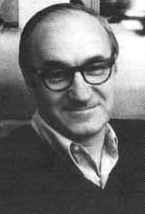
American psychologist who experimentally investigated observational learning, emphasizing the role of cognitive factors (p. 220).
|
|
|
John Garcia (b. 1917)
|
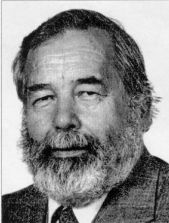
American psychologist who experimentally demonstrated the learning of taste aversions in animals, a finding that challenged several basic assumptions of classical conditioning (p. 197).
|
|
|
Ivan Pavlov (1849-1936)
|

Russian physiologist who first described the basic learning process of associating stimuli that is now called classical conditioning (p. 185).
|
|
|
Robert A. Rescorla (b. 1940)
|
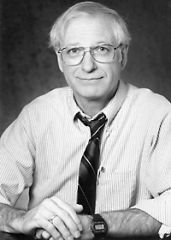
American psychologist who experimentally demonstrated the involvement of cognitive processes in classical conditioning (p. 195).
|
|
|
Martin Seligman (b. 1942)
|
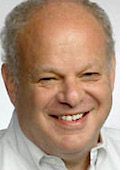
American psychologist who conducted research on learned helplessness in dogs, and later, in humans; developed a program to teach "learned optimism" and created the positive psychology movement (p. 215).
|
|
|
B.F. Skinner (1904-1990)
|
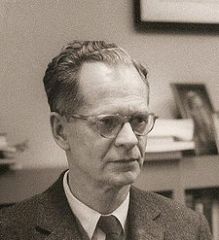
American psychologist who developed the operant conditioning model of learning; emphasized studying the relationship between environmental factors and observable actions, not mental processes, in trying to achieve a scientific explanation of behavior (p. 201).
|
|
|
Edward L. Thorndike (1874-1949)
|
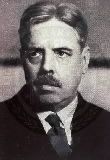
American psychologist who was the first to experimentally study animal behavior and document how active behaviors are influenced by their consequences; postulated the law of effect (p. 200)
|
|
|
Edward C. Tolman (1898-1956)
|
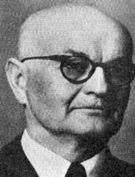
American psychologist who used the terms cognitive map and latent learning to describe experimental findings that strongly suggested that cognitive factors play a role in animal learning (p. 213).
|
|
|
John B. Watson (1878-1958)
|

American psychologist who, in the early 1900s, founded behaviorism, an approach that emphasizes the scientific study of outwardly observable behavior rather than subjective mental states (p. 190).
|
|
|
encoding
|
The process of transforming information into a form that can be entered into and retained by the memory system (p.232)
|
|
|
memory
|
The mental processes that enable us to retain and use information over time (p. 232)
|
|
|
retrieval
|
The process of recovering information stored in memory so that we are consciously aware of it (pp. 232, 243).
|
|
|
stage model of memory
|
A model describing memory as consisting of three distinct stages; sensory memory, short-term memory, and long-term memory (p. 232).
|
|
|
storage
|
The process of retaining information in memory so that it can be used at a later time. (p. 232).
|
|
|
long-term memory
|
The stage of memory that represents the long-term storage of information (p. 233).
|
|
|
sensory memory
|
The stage of memory that registers information from the environment and holds it for a very brief period of time (p. 233).
|
|
|
short-term memory
|
The active stage of memory in which information is stored for up to about 20 seconds (p. 233).
|
|
|
chunking
|
Increasing the amount of information that can be held in short-term memory by grouping related items together into a single unit, or chunk (p. 236).
|
|
|
maintenance rehearsal
|
The mental or verbal repetition of information in order to maintain it beyond the usual 20-second duration of short-term memory (p. 236).
|
|
|
working memory
|
The temporary storage and active, conscious manipulation of information needed for complex cognitive tasks, such as reasoning, learning, and problem solving (p. 238).
|
|
|
elaborative rehearsal
|
Rehearsal that involves focusing on the meaning of information to help encode and transfer it to long-term memory (p. 239).
|
|
|
episodic memory
|
Category of long-term memory that includes memories of particular events (p. 240).
|
|
|
procedural memory
|
Category of long-term memory that includes memories of different skills, operations, and actions (p. 240).
|
|
|
semantic memory
|
Category of long-term memory that includes memories of general knowledge of facts, names, and concepts (p. 240).
|
|
|
explicit memory
|
Information or knowledge that can be consciously recollected; also called declarative memory (p. 241).
|
|
|
implicit memory
|
Information or knowledge that affects behavior or task performance but cannot be consciously recollected; also called nondeclarative memory (p. 241).
|
|
|
clustering
|
Organizing items into related groups during recall from long-term memory (p. 242).
|
|
|
semantic network model
|
A model that describes units of information in long-term memory as being organized in a complex network of associations (p. 242).
|
|
|
retrieval cue
|
A clue, prompt, or hint that helps trigger recall of a given piece of information stored in long-term memory (p. 243).
|
|
|
retrieval cue failure
|
The inability to recall long-term memories because of inadequate or missing retrieval cues (p. 243).
|
|
|
tip-of-the-tongue (TOT) experience
|
A memory phenomenon that involves the sensation of knowing that specific information is stored in long-term memory, but being temporarily unable to retrieve it (p. 244).
|
|
|
cued recall
|
A test of long-term memory that involves remembering an item of information in response to a retrieval cue (p. 245).
|
|
|
recall
|
A test of long-term memory that involves retrieving information without the aid of retrieval cues; also called free recall (p. 245)
|
|
|
recognition
|
A test of long-term memory that involves identifying correct information out of several possible choices (p. 245).
|
|
|
serial position effect
|
The tendency to remember items at the beginning and end of a list better than the items in the middle (p. 245).
|
|
|
context effect
|
The tendency to recover information more easily when the retrieval occurs in the same setting as the original learning of information (p. 246).
|
|
|
encoding specificity principle
|
The principle that when the conditions of information retrieval are similar to the conditions of information encoding, retrieval is more likely to be successful (p. 246).
|
|
|
flashbulb memory
|
The recall of very specific images or details surrounding a vivid, rare, or significant personal event, details may or may not be accurate (p. 246).
|
|
|
mood congruence
|
An encoding specifically phenomenon in which a given mood tends to evoke memories that are consistent with that mood (p. 246).
|
|
|
forgetting
|
The inability to recall information that was previously available (p. 248).
|
|
|
encoding failure
|
The inability to recall specific information because of insufficient encoding of the information for storage in long-term memory (p. 249).
|
|
|
decay theory
|
The view that forgetting is due to normal metabolic processes that occur in the brain over time (p. 250).
|
|
|
prospective memory
|
Remembering to do something in the future (p. 250).
|
|
|
déjà vu experience
|
A memory illusion characterized by brief but intense feelings or familiarity in a situation that has never been experienced before (p. 251).
|
|
|
source memory or source monitoring
|
Memory for when, where, and how a particular experience or piece of information was acquired (p. 251).
|
|
|
interference theory
|
The theory that forgetting is caused by one memory competing with or replacing another (p. 252).
|
|
|
proactive interference
|
Forgetting in which an old memory interferes with remembering a new memory; forward-acting memory interference (p. 252).
|
|
|
retroactive interference
|
Forgetting in which a new memory interferes with remembering an old memory; backward-acting memory interference (p. 252).
|
|
|
repression
|
Motivated forgetting that occurs unconsciously; a memory that is blocked and unavailable to consciousness (pp. 252, 424).
|
|
|
suppression
|
Motivated forgetting that occurs consciously; a memory that is blocked and unavailable to consciousness (p. 252).
|
|
|
misinformation effect
|
A memory-distortion phenomenon in which a person's existing memories can be altered if the person is exposed to misleading information (p. 254).
|
|
|
source confusion
|
A memory distortion that occurs when the true source of the memory is forgotten (p. 255).
|
|
|
false memory
|
A distorted or fabricated recollection or something that did not actually occur (p. 256).
|
|
|
schema (SKEE-muh)
|
An organized cluster of information about a particular topic (p. 256).
|
|
|
script
|
A schema for the typical sequence of an everyday event (p. 256).
|
|
|
imagination inflation
|
A memory phenomenon in which vividly imagining an event markedly increases confidence that the event actually occurred (p. 258).
|
|
|
memory trace or engram
|
The brain changes associated with a particular stored memory (p. 261).
|
|
|
long-term potentiation
|
A long-lasting increase in synaptic strength between two neurons (p. 263).
|
|
|
amnesia (am-NEE-zha)
|
Severe memory loss (p. 264).
|
|
|
memory consolidation
|
The gradual, physical process of converting new long-term memories to stable, enduring long-term memory codes (p. 264).
|
|
|
retrograde amnesia
|
Loss of memory, especially for episodic information; backward-acting amnesia (p. 264).
|
|
|
anterograde amnesia
|
Loss of memory caused by the inability to store new memories; forward-acting amnesia (p. 265).
|
|
|
Alzheimer's disease (AD)
|
A progressive disease that destroys the brain's neurons, gradually impairing memory, thinking, language, and other cognitive functions, resulting in the complete inability to care for oneself; the most common cause of dementia (p. 268).
|
|
|
dementia
|
Progressive deterioration and impairment of memory, reasoning, and other cognitive functions occurring as the result of a disease or a condition (p. 268).
|
|
|
Richard F. Thompson (b.1930)
|
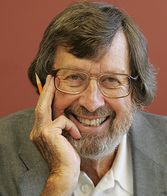
American psychologist and neuroscientist who has conducted extensive research on the neurobiological foundations of learning and memory (p. 261).
|
|
|
George Sperling (b. 1934)
|

American psychologist who identified the duration of visual sensory memory in a series of classic experiments in 1960 (p. 234).
|
|
|
Brenda Milner (b. 1918)
|
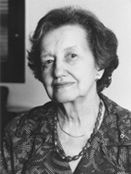
Canadian neuropsychologist whose groundbreaking research on the role of brain structures and functions in cognitive processes helped establish neuropsychology as a field; extensively studied the famous amnesia patient H. M. (p. 265).
|
|
|
Elizabeth F. Loftus (b. 1944)
|

American psychologist who has conducted extensive research on the memory distortions that can occur in eyewitness testimony (p. 254).
|
|
|
Karl Lashley (1890-1958)
|

American physiological psychologist who attempted to find the specific brain location of particular memories (p. 261).
|
|
|
Eric Kandel (b. 1929)
|
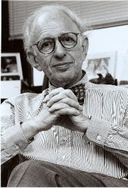
American neurobiologist, born in Austria, who won the Nobel Prize in 2000 for his work on the neural basis of learning and memory in the sea snail Aplysia (p. 263).
|
|
|
Hermann Ebbinghaus (1850-1909)
|
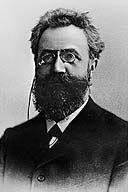
German psychologist who originated the scientific study of forgetting; plotted the first forgetting curve, which describes the basic pattern of forgetting learned information over time (p. 248).
|
|
|
Suzzane Corkin (b. 1937)
|

American neuropsychologist who has extensively investigated the neural basis of memory, including several investigations of the famous amnesia patient H.M. (p. 265).
|
|
|
According to _____, a rat learning to navigate a maze will eventually acquire _____.
|
Edward C. Tolman; a cognitive map of the maze
|
|
|
According to Albert Bandura, the four factors that are necessary for observational learning to occur are:
|
attention, memory, motor skills, and motivation.
|
|
|
The manager of a large shopping mall was upset about the groups of rowdy teenagers who were hanging out by the mall entrance and scaring off his adult customers. He discovered that if he played classical music over the loudspeakers by the door, the teenagers no longer gathered at the entrance. The mall manager's use of classical music to modify the teenagers' behavior is an example of:
|
punishment by application
|
|
|
Which psychologists strongly insisted that psychology should only study observable behaviors, not mental processes or consciousness?
|
John B. Watson and B. F. Skinne
|
|
|
After two weeks of being screamed at by his drill sergeant at boot camp and shuddering with fear in response, a Marine recruit named Joe now shudders every time he hears the footsteps of his drill sergeant coming down the hall. When the drill sergeant enters the room, Joe snaps to attention and salutes. In this example, shuddering to the sound of the footsteps is _____ and saluting is _____.
|
a conditioned response; an operant response in the presence of a discriminative stimulus
|
|
|
A television commercial for a new camera features a handsome man taking photographs of beautiful women in bikinis on a California beach. This commercial uses _____ conditioning techniques, following an approach to advertising that was pioneered by _____.
|
classical; John B. Watson
|
|
|
Which of the following suggestions would probably help you overcome the temptation to choose a short-term reinforcer over a long-term reinforcer?
|
Focus your attention on the delayed, long-term reinforcer.
|
|
|
A group of rats was run through a maze for twelve days. On days 1 through 10, there was no food reward at the end of the maze, and the rats made many errors as they slowly moved through the maze. On day 11, a food reward was placed at the end of the maze. After the food reward was introduced, the rats ran the maze very quickly and with few errors. According to psychologist _____, this experiment demonstrated a phenomenon called _____.
|
Edward C. Tolman; latent learning
|
|
|
In dogs, learned helplessness could be overcome by:
|
dragging the dogs over the barrier to the side of the cage that was not electrified.
|
|
|
Madison met her first serious boyfriend when she was working a summer job at a café on the beach at an oceanfront resort. Years later, when Madison smells the distinctive smell of saltwater and sand, she still feels a twinge of sadness, remembering the ending of their romance at the end of the summer when they both returned to their separate colleges. In this example, the conditioned stimulus is _____ and the conditioned response is _____.
|
the smell of the ocean; sadness
|
|
|
A rat has been trained in an operant conditioning chamber to press a lever to get a food pellet. Following the acquisition trials the researcher then withheld reinforcement for lever pressing and eventually the rat stopped responding. This example illustrates:
|
extinction.
|
|
|
In the famous “Little Albert” study, what was the conditioned stimulus?
|
the white rat
|
|
|
According to the _____ model developed by _____, behavior is shaped and maintained by its environmental consequences.
|
operant conditioning; B. F. Skinner
|
|
|
If an action is negatively reinforced, it is _____ to be repeated. If an action is positively reinforced, it is _____ to be repeated.
|
more likely; more likely
|
|
|
According to the Enhancing Well-Being with Psychology section “Using Learning Principles to Improve Self-Control,” to help motivate yourself to finish your history term paper on time, you should:
|
plan to reward yourself with a reinforcing stimulus when your term paper is complete.
|
|
|
Gabe got stuck in an elevator in a high-rise office building one morning. Now he refuses to enter an elevator. If “entering an elevator” is the operant, what type of consequence has altered Gabe's behavior?
|
punishment by application
|
|
|
Sarah gets a weekly allowance, but only if all of her chores are completed by 5 PM on Friday night. Although Sarah does some work around the house during the week, most of her chores are done in a burst of activity after she comes home from school on Friday afternoon. Sarah's behavior is being maintained on a _____ schedule of reinforcement.
|
fixed-interval (FI)
|
|
|
A pigeon in operant chamber #1 regularly receives a pellet of food after every ten pecks at a red disk, no matter how long it takes. A rat in operant chamber #2 regularly receives a pellet of food for the first bar press it makes after ten minutes have passed, no matter how many bar presses it makes. The pigeon is on a _____ schedule of reinforcement, and the rat is on a _____ schedule of reinforcement.
|
fixed-ratio; fixed-interval
|
|
|
While his exhausted mother was taking a nap, four-year-old Dennis decided to help her out by doing the laundry. He dragged a stool over to the washing machine, stuffed clothes into it, turned it on, and dumped a box of detergent on top of the clothes. Which psychologist and which learning theory could best explain Dennis's behavior?
|
Albert Bandura; observational learning
|
|
|
Participants waited briefly in a psychology professor's office (pictured below) and were then taken to another room and asked to recall details of the office. The results showed that many participants erroneously remembered objects that were not actually present in the office. These memory errors were most likely the result of:
|
the use of schemas, which included items that would be consistent with a typical professor's office
|
|
|
According to George Miller, capacity of short-term memory:
|
is about seven items of information, plus or minus two
|
|
|
When information in short-term memory is not rehearsed or encoded, what happens to it?
|
The information fades, or decays, after a very brief period of time, usually a matter of seconds.
|
|
|
When you are in a positive mood, you are more likely to recall positive memories. This phenomenon is referred to as _____ and it is one form that _____ can take.
|
mood congruence; the encoding specificity principle
|
|
|
The famous Ebbinghaus forgetting curve:
|
demonstrates that much of what we forget is lost relatively soon after we originally learn the information.
|
|
|
Which of the following is NOT one of the key brain structures involved in encoding and storing memories?
|
hypothalamus
|
|
|
The famous case of the man known as H.M. illustrates the important role played by _____ in the formation of new memories.
|
the hippocampus
|
|
|
Research with the sea snail Aplysia has demonstrated that:
|
forming a new memory involves changes in both the function and structure of neurons.
|
|
|
When seven-year-old Grace had to recite the Girl Scout Pledge in front of the other members of her Brownie troop, she had trouble remembering some of the lines in the middle of the pledge. This illustrates:
|
the serial position effect.
|
|
|
The basic premise of repressed memory therapy or recovered memory therapy is that:
|
adult psychological problems are often due to sexual abuse in childhood, and memories of the childhood abuse have been repressed.
|
|
|
Another name for implicit memory is _____ memory.
|
nondeclarative
|
|
|
In telling the detective everything she could recall about what happened when she went into the bank to make a deposit, Lynn got to the point that she could not recall any more details. At that point, Lynn was probably experiencing:
|
retrieval cue failure.
|
|
|
Mason was absolutely certain that he knew the name of the actress who played the character of Monica on the popular television series Friends, but he could not think of her name. This is an example of:
|
a tip-of-the-tongue experience.
|
|
|
Adam vividly remembers the accident that sent him to the emergency room for stitches. This is an example of which type of long-term memory?
|
episodic memory
|
|
|
The “phonological loop” and the “visuospatial sketchpad” are:
|
two of the three components in psychologist Alan Baddeley's model of working memory
|
|
|
What is the “lost-in-the-mall” technique?
|
using family members of a study participant to help induce a false memory for an event that never occurred, such as being lost in a shopping mall as a child
|
|
|
The Enhancing Well-Being with Psychology section provides several techniques and suggestions to enhance your memory of information. Which of the following is one of those suggestions?
|
Take the distributed practice approach to learning new information.
|
|
|
The drawing depicts a left-side view of the brain. The leader lines point to some of the key brain structures involved in memory. Identify the letter of the brain structure that is involved in encoding the emotional qualities of memories.
|
The amygdala
|
|
|
“My first memory? I can remember the nature walks that our preschool class took almost every day. It was really just a city park that had a small lake and was about three blocks away, but I remember all of us walking in pairs, holding hands, and crossing the streets.” According to the research discussed in the Culture and Human Behavior box, memories of general, group activities centered on family or community members were most likely to be:
|
reported by Chinese and Taiwanese college students.
|
|
|
A classic experiment by psychologist George Sperling demonstrated that:
|
information is held in visual sensory memory for about half a second.
|
|
|
Of the different types of memory, _____ memory has the shortest duration.
|
sensory
|
|
|
When Kate got home, Guy rummaged through the grocery sack, then said, “Kate, you forgot the dental floss and the coffee creamer! They were the last two things I told you to get! Don't you remember me saying that?” That Kate remembered to get the first items on the list is a pattern of remembering called:
|
the primacy effect.
|
|
|
When asked to define the learning concept negative reinforcement, Hannah replied, “Negative reinforcement is when you perform a behavior that stops or lets you avoid an unpleasant stimulus, so you're more likely to repeat the behavior when you encounter the same unpleasant stimulus in the future.” Hannah's answer reflects which category of long-term memory?
|
semantic memory
|
|
|
Whenever Carlos reaches for the silverware, he keeps reaching for the drawer that used to contain the silverware. Carlos's failure to remember the new location of the silverware is probably due to:
|
proactive interference
|

